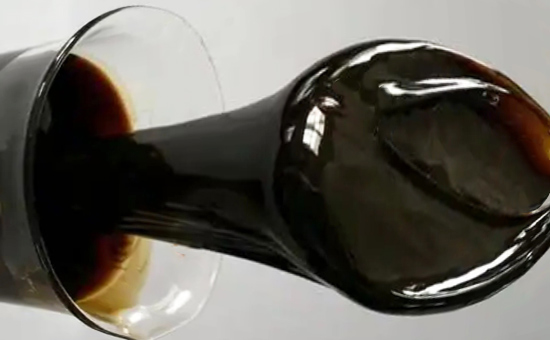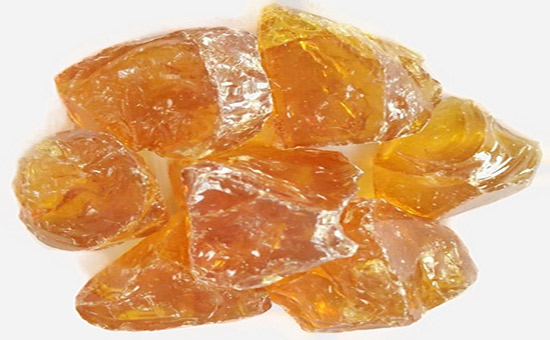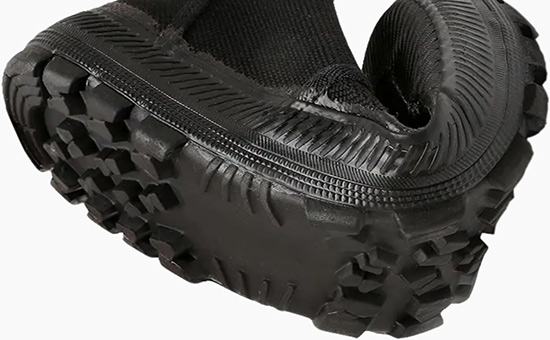Rubber shoes are a unified whole composed of organic coordination of multiple parts, and the rubber parts have different roles and different performance requirements for rubber materials, such as rubber shoe outsoles need to have good elasticity, wear resistance and flex resistance, etc., and withstand frequent flexion and friction. As a new raw material for the recycling of waste rubber resources, reclaimed rubber can effectively reduce the cost of raw materials in the production of rubber parts for rubber shoes. When the rubber parts of the rubber shoes are mixed with reclaimed rubber, the choice of processing aids is crucial.
1. The variety and function of softeners commonly used in the production of rubber shoes from recycled rubber
(1) Pine tar: plant-based softener, which has a good softening effect on natural rubber and can prevent scorching to a certain extent; It is polluting, not suitable for latex reclaimed rubber to produce light-colored rubber parts of rubber shoes; Has a slight tendency to delay vulcanization.
(2) Engine oil: petroleum-based softener, when producing rubber shoe rubber parts, choose No. 20 and No. 30 engine oil with light color and low viscosity, which can reduce friction and heat generation, increase the fluidity of rubber and shorten the rubber mixing cycle.
(3) Vaseline: a softening agent that can promote the expansion and softening of rubber molecules during use, and improve acid resistance, alkali resistance and aging resistance; Vaseline has poor compatibility with rubber, and the dosage should not exceed 2 parts to avoid spraying.

(4) Aromatic oil: petroleum-based softener, good compatibility with rubber, with the effect of reducing heat generation and promoting the dispersion of compounding agent.
(5) Industrial grease: the mixture of calcium soap and mineral oil of vegetable oil has good compatibility with rubber, and industrial grease (also known as calcium-based grease) is often used in the production of rubber shoes and rubber parts of reclaimed rubber, which is not easy to spray.
(6) Coumaron resin: a multi-functional softener, which has the functions of reinforcing and promoting crushing. When sulfur vulcanization is used in the production of rubber shoe parts from reclaimed rubber, the coumaron resin has a dissolving effect on sulfur and can prevent sulfur from spraying.
2. The varieties and functions of plasticizers commonly used in the production of rubber shoes from recycled rubber
The plasticizer is polar and suitable for polar rubber, and the common varieties are dibutyl ester and dioctyl ester, which can reduce the force among rubber molecules, reduce hardness and tensile stress, give higher elasticity and lower heat generation, and improve cold resistance. Plasticizers can be used in the production of oil-resistant rubber boots and rubber shoes using nitrile rubber and nitrile reclaimed rubber.

3. The varieties and functions of tackifiers commonly used in the production of rubber shoes from recycled rubber
(1) Rosin: unsaturated compounds such as rosin acid and rosin anhydride can significantly improve the self-adhesion of rubber; However, the unsaturation of the molecular structure of rosin is large, which will accelerate the aging of rubber, and disproportionated rosin can be used in the production of rubber parts of rubber shoes by reclaimed rubber.
(2) Olefin resin: the olefin compound in turpentine is polymerized, which has a significant viscosity effect on rubber, will not promote rubber aging during use, and is non-polluting, and is suitable for the back veneer of gasoline glue and slurry-free strip of rubber shoe manufacturers.
(3) Xylene resin: multi-functional additives, integrating various functions such as viscosity, softening and reinforcement; In the production of reclaimed rubber shoes, the viscosity effect of xylene resin can be used to facilitate the molding operation, and the problem of difficult to stick synthetic rubber can also be solved.
4. The varieties and functions of dispersants commonly used in the production of rubber shoes from recycled rubber
The dispersant is usually a mixture of fatty acids, metal soaps, high boiling point alcohols and hydrocarbon resins quotas, which can reduce the intermolecular friction of recycled rubber in the processing state, promote the uniform dispersion of powdered compounding agent in the rubber matrix, increase the fluidity of the rubber compound, and facilitate the molding of rubber shoe parts.

5. The varieties and functions of homogenizers commonly used in the production of rubber shoes from recycled rubber
When reclaimed rubber is used with other varieties of rubber to produce different parts of rubber shoes, due to the disparity in molecular weight, molecular weight distribution, polarity and crystallinity among different rubber types, it is difficult E4LYY729 to mix evenly only by the mechanical shearing of the rubber mixer, and the appropriate use of homogenizer can introduce groups of unequal polarity into the blended rubber, which promotes the mutual penetration and diffusion of the interface among the two rubbers, accelerates the blending, makes several rubbers achieve complementary properties, and improves the comprehensive performance of rubber parts.
When using reclaimed rubber to produce different parts of rubber shoes, the varieties and dosages of vulcanization systems, reinforcing filling systems, anti-aging systems and other compounding agents are also different.
Exclusive original article [commercial authorization] reprint, excerpt and excerpt in any form are prohibited without written authorization. Focus on Hongyun rubber: learn the process formula and raw material technology of producing rubber products from recycled rubber to help you reduce costs and increase profits